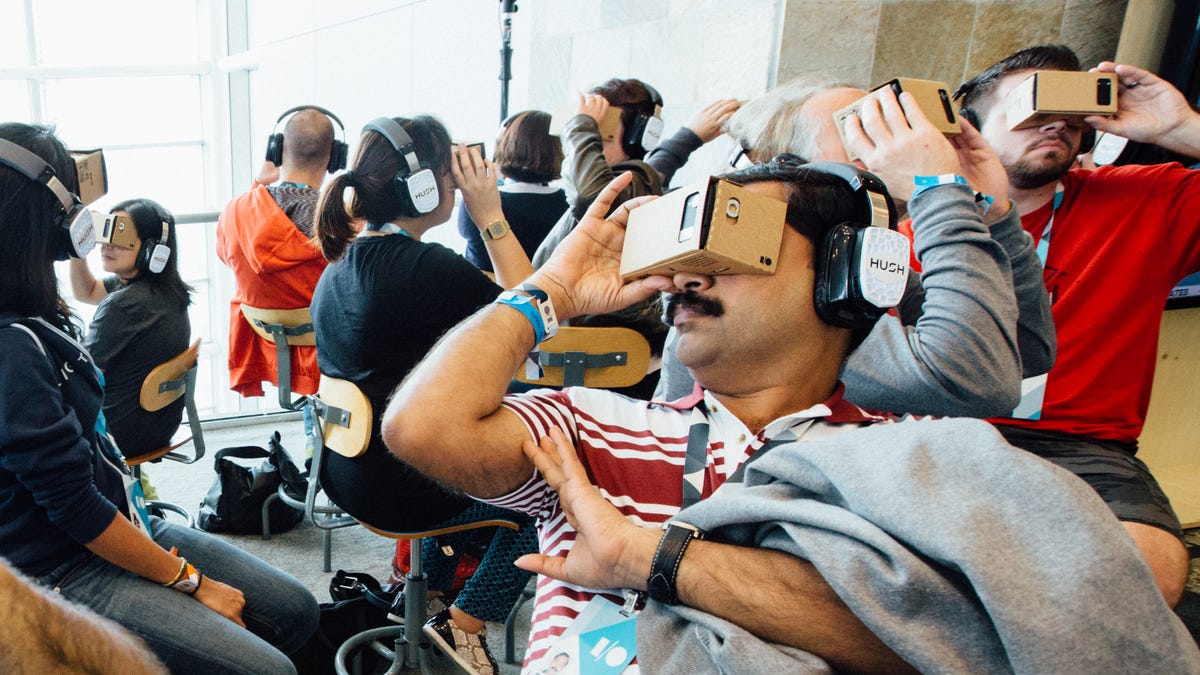Imagine Google's VR gadget without the cardboard. Google does
A new smartphone-based headset reportedly will feature improved sensors and lenses housed in a solid plastic casing.
Google's virtual reality ambitions leave cardboard behind.
The Web giant is planning to release a new VR headset later this year, the Financial Times reported Sunday. A successor to Google's Cardboard VR viewer released in 2014, the new smartphone-based headset would sport improved sensors and lenses housed in a solid plastic casing.
The move would underscore the continuing maturation of VR, which promises to transport goggle-wearing users to digitally created 3D worlds. It's all the rage among big tech companies: Facebook is on the verge of releasing its long-awaited Oculus Rift headset, while Sony, Samsung and HTC are also heavily invested in the technology.
Microsoft's HoloLens, meanwhile, is aimed at augmented reality, which adds 3D computer-generated scenes to people's view of the real world. Apple has also reportedly assembled a secret research group focused on virtual and augmented reality.
VR's potential extends well beyond the early emphasis on its use in video games, virtual field trips and reboots of classic toys. Backers say it could radically change the way we use computers, with ripple effects into how we communicate with one another.
Apple CEO Tim Cook last month summed up the fascination. "I don't think it's a niche," he said. "It's really cool. It has some interesting applications."
Whether consumers will bite, though, remains a mystery. Samsung has yet to reveal sales figures for its Gear VR headset, which was released last year for $99 (£80 in the UK or AU$159 in Australia), not including the price of a smartphone to power it. Other major devices, ranging from the $599 (£499 or AU$649) Oculus Rift to HTC's Vive to Sony's PlayStation VR are all expected to be released this year.
With Cardboard, Google took a bargain-basement tack. For $30 or less, consumers get a corrugated-paper housing for the smartphone they already own, with cutouts for nose and eyes. An app on the phone delivers the VR experience as cardboard blinders shut out the viewer's surroundings. Little more than a party favor, Google Cardboard could serve as a gateway drug to get people hooked on VR.
Google declined to comment for this story, but CEO Sundar Pichai last week signaled the Mountain View, California-based company's continued interest in virtual reality. He noted that more than 5 million Cardboard viewers have been shipped.
"It's still incredible early innings for virtual reality as a platform," Pichai said during an earnings conference call. "Cardboard is just a first step, but we are excited by the progress we have seen."
Updated at 3 p.m. PT: Added Google declining to comment.


